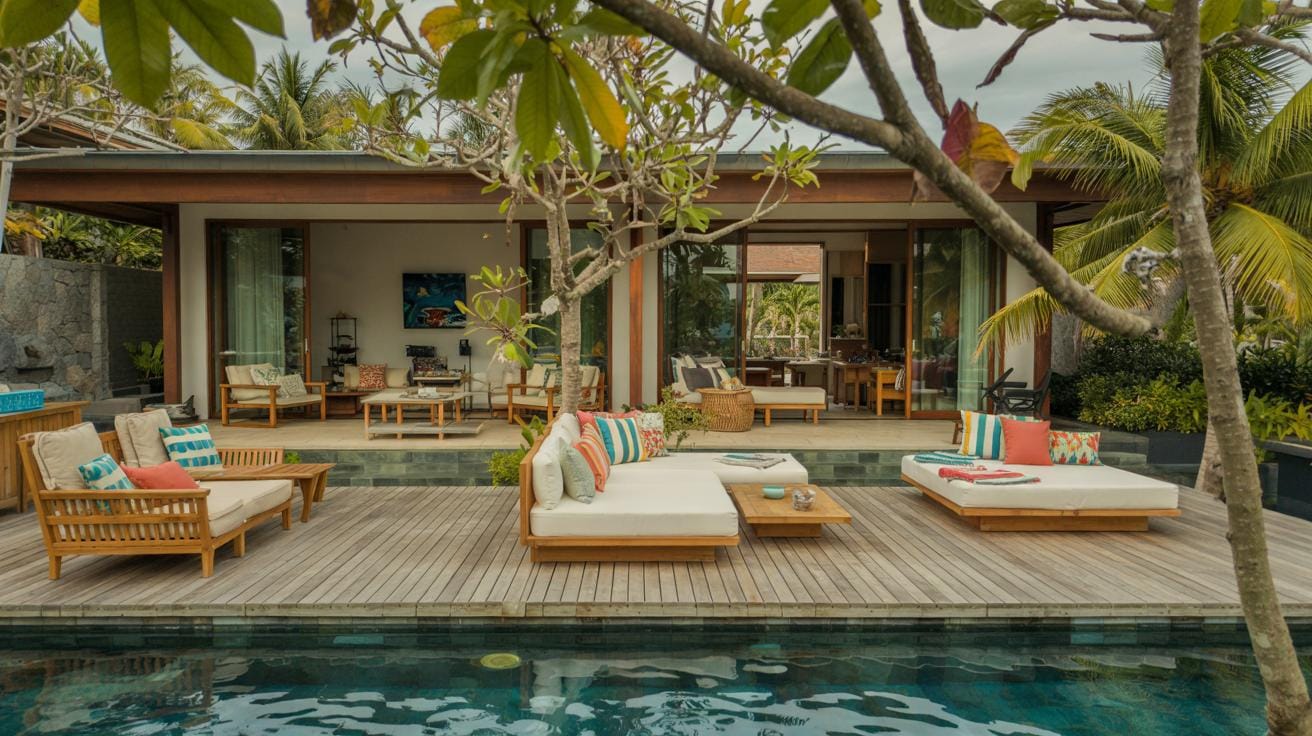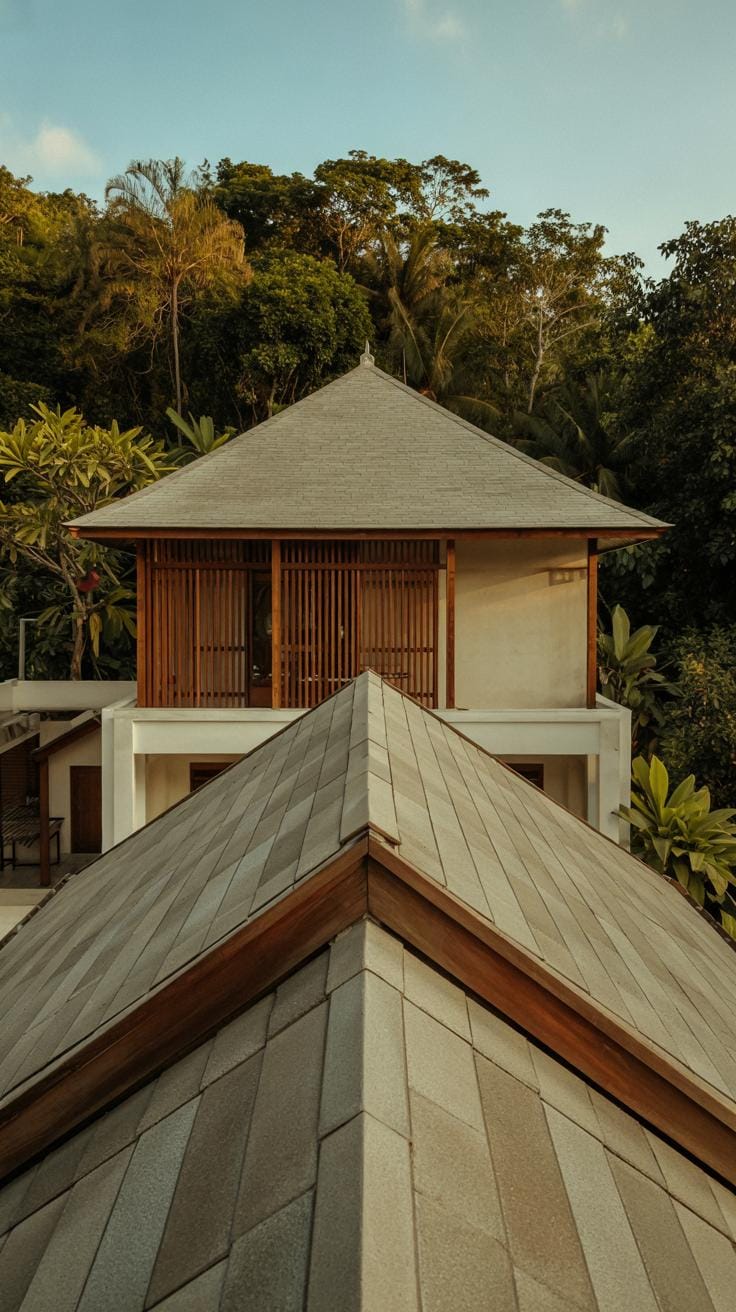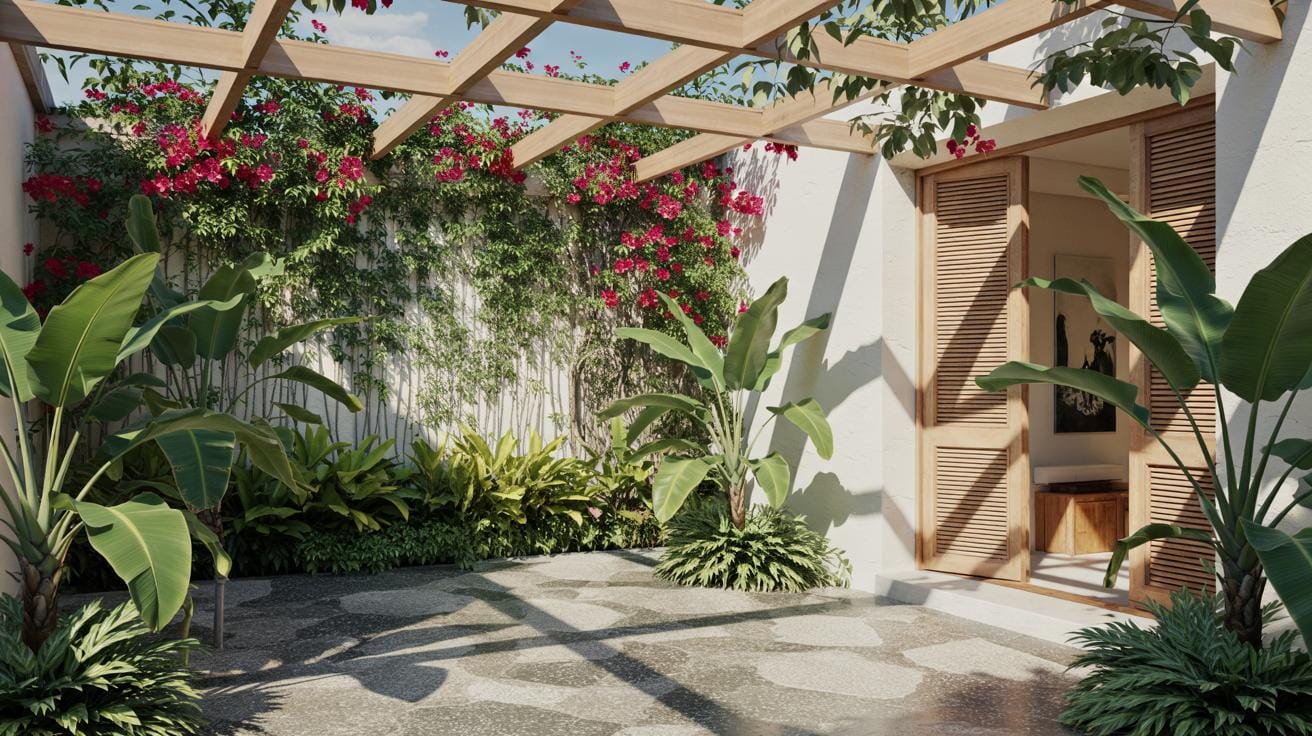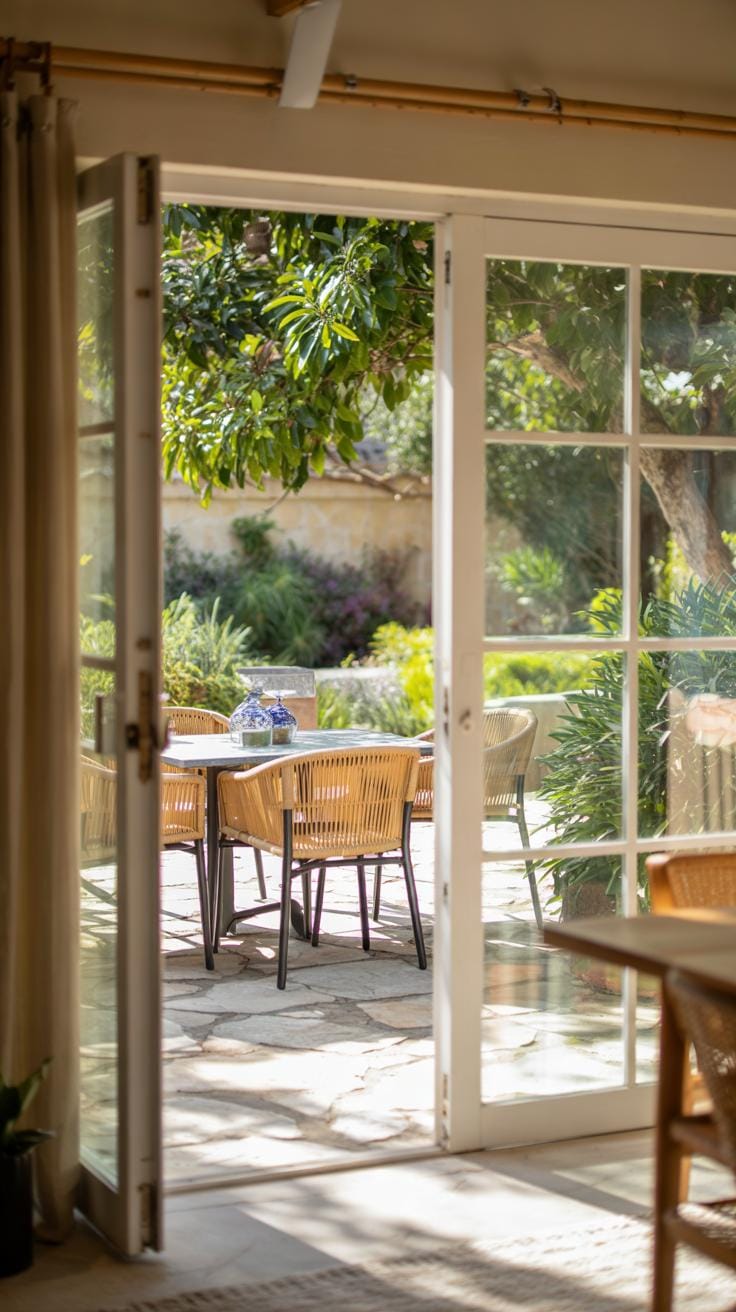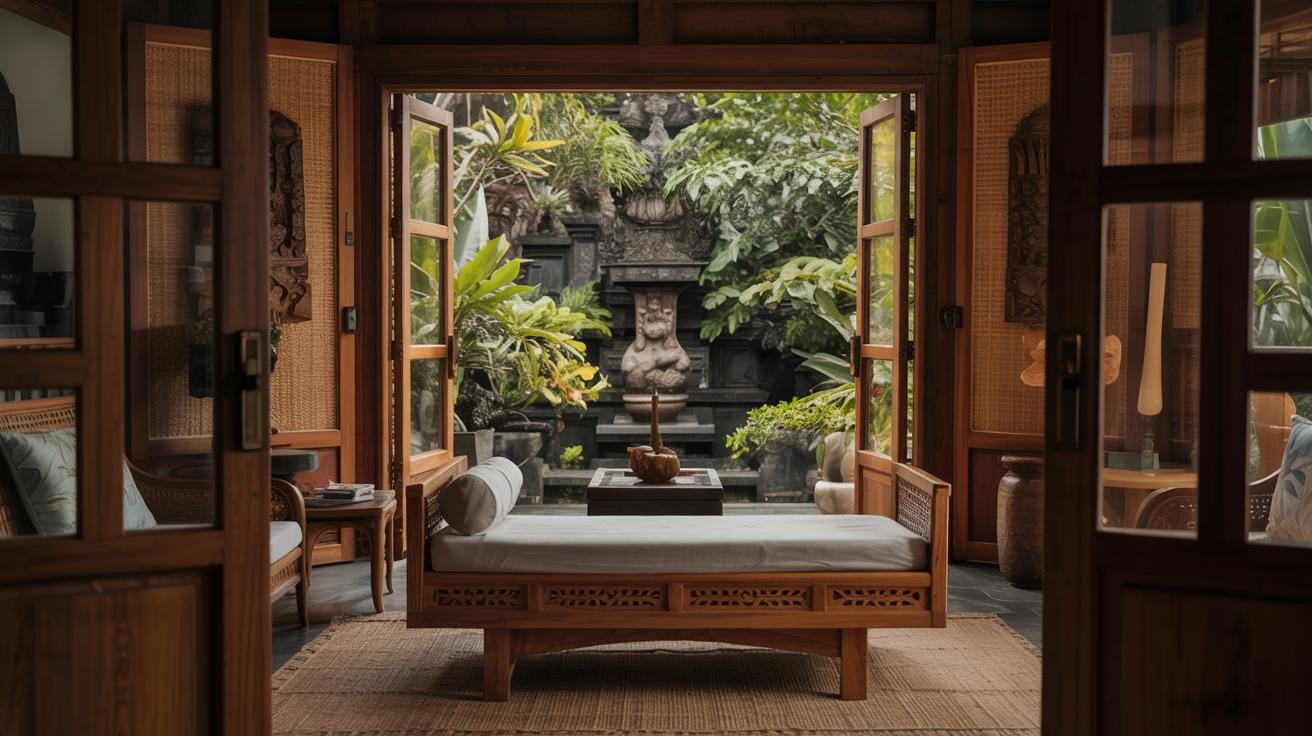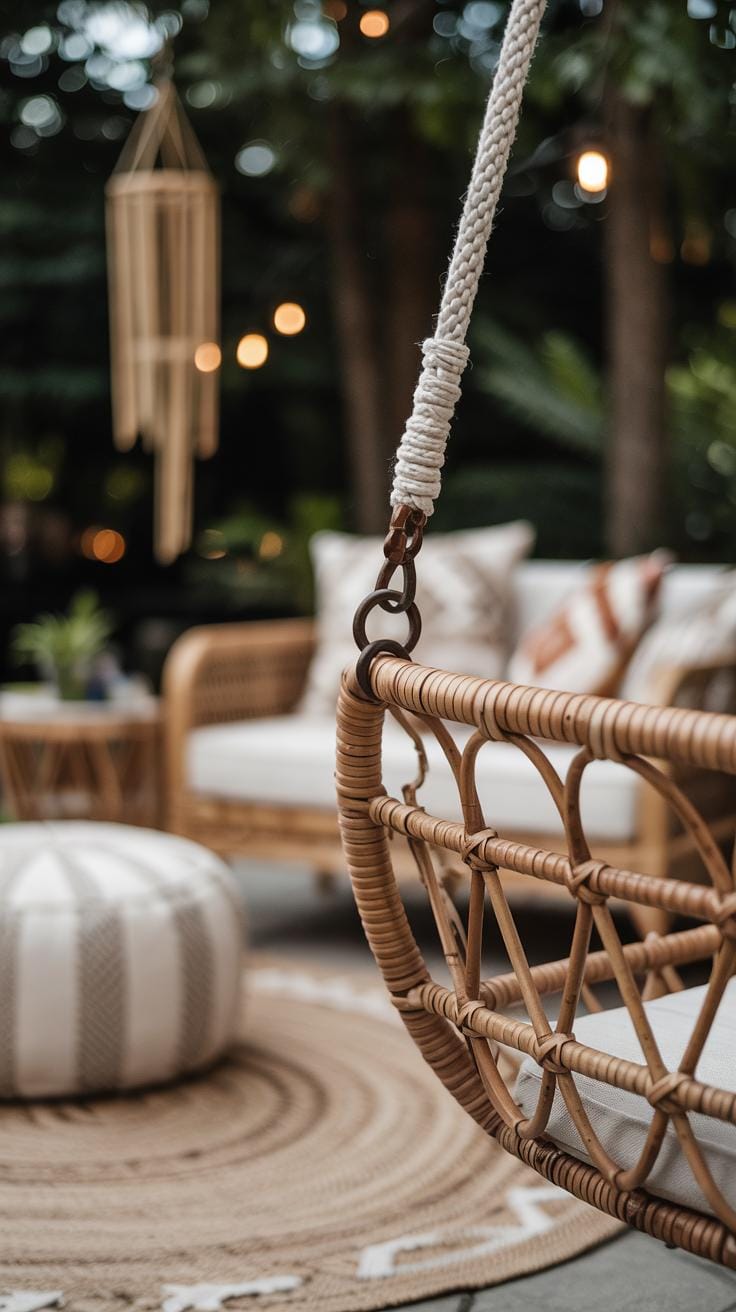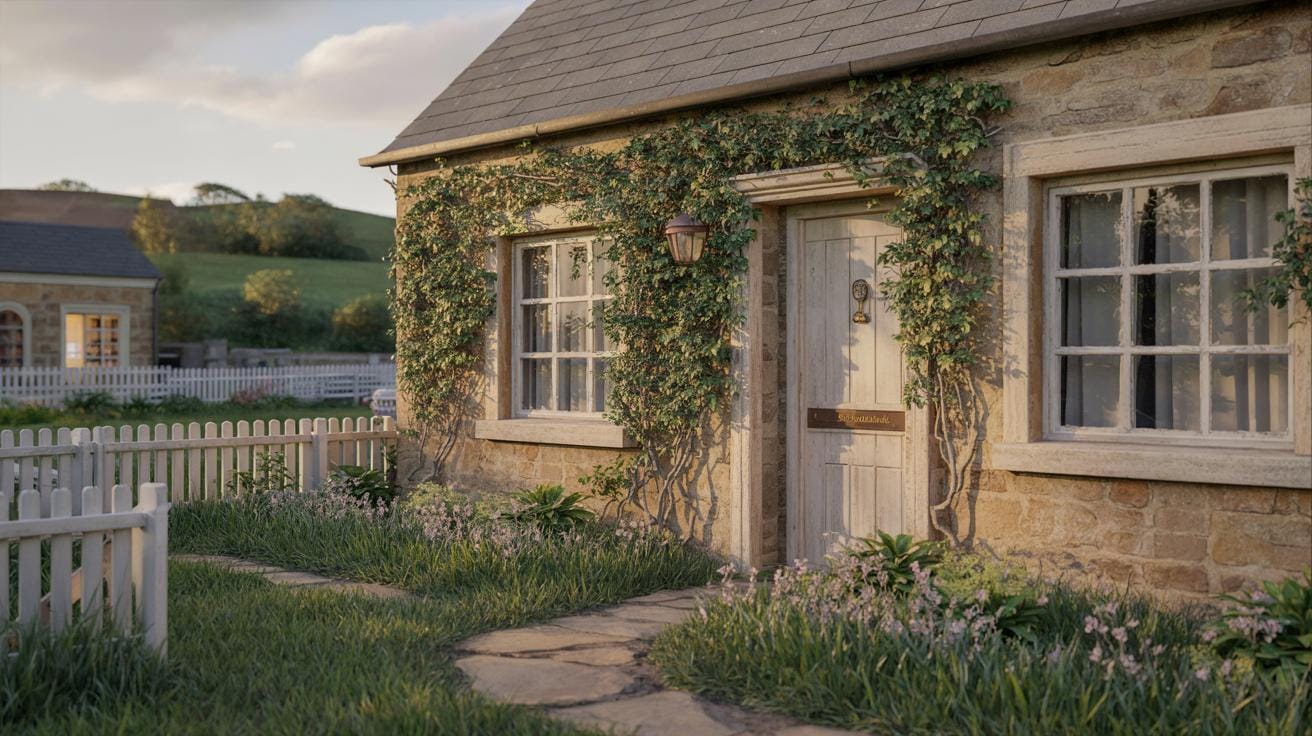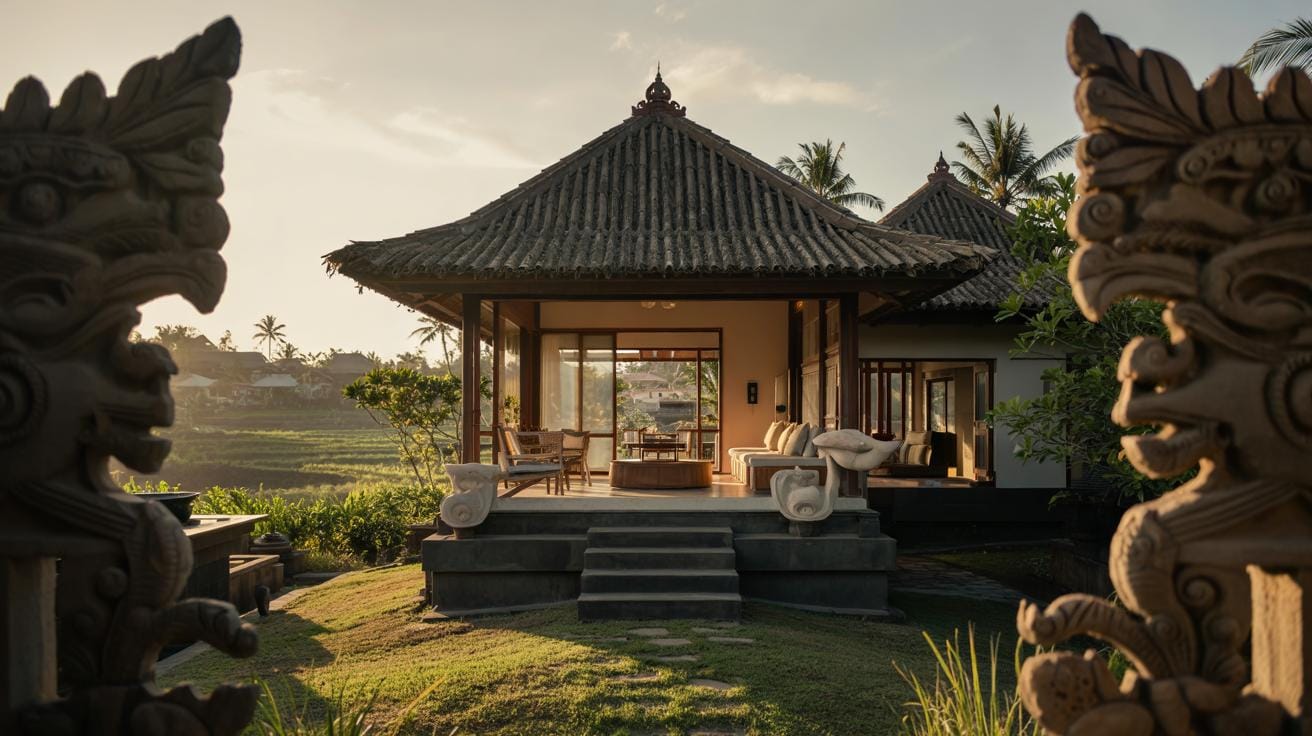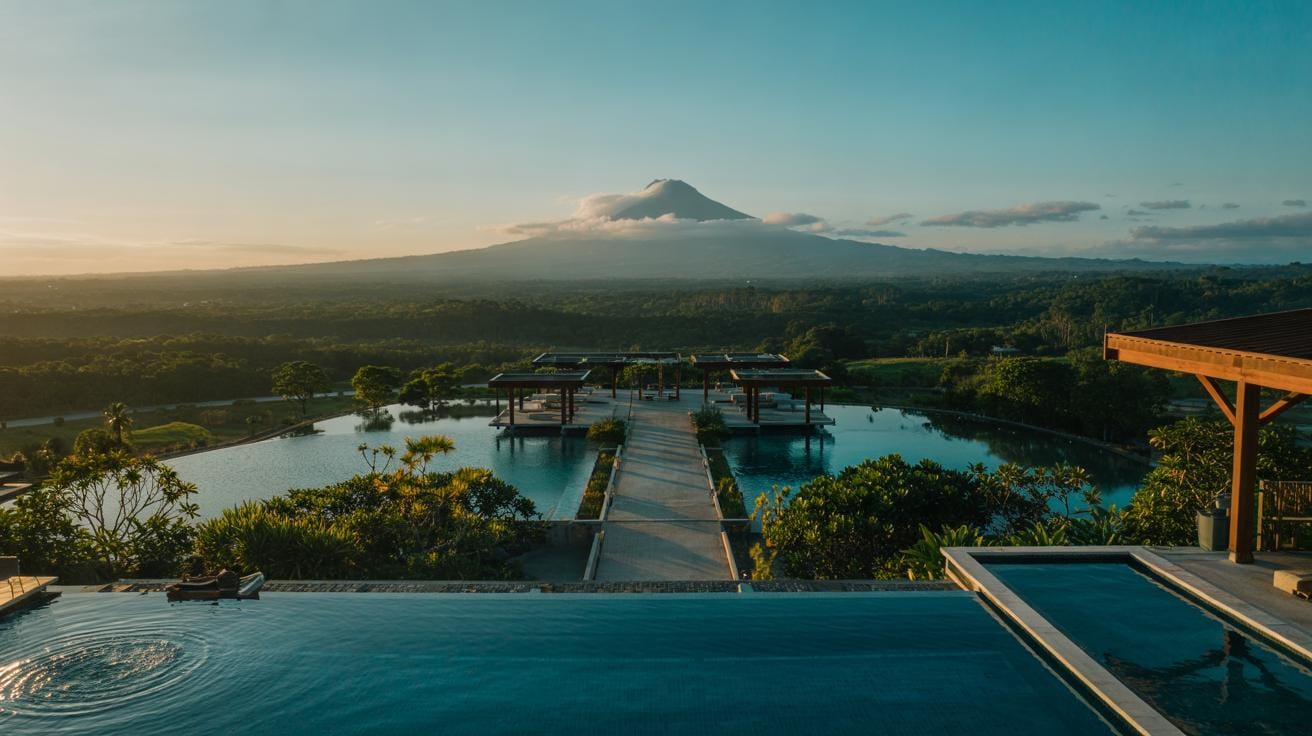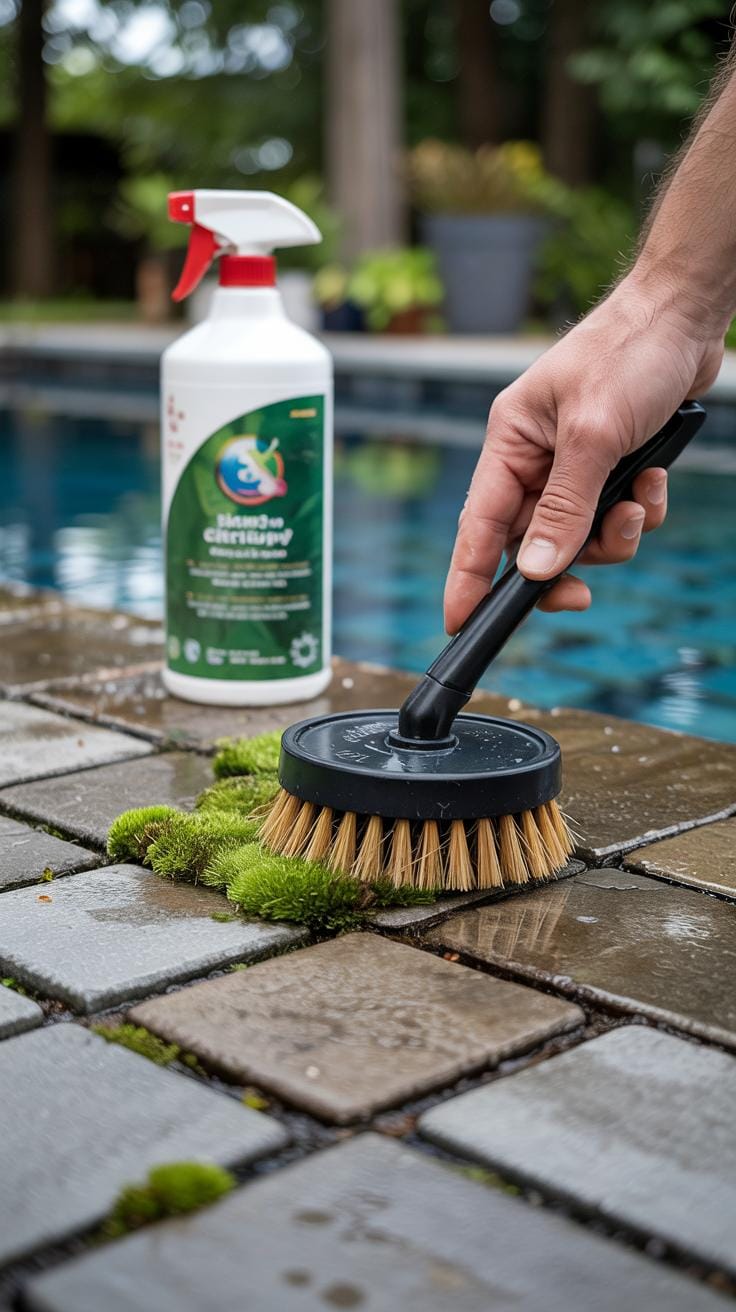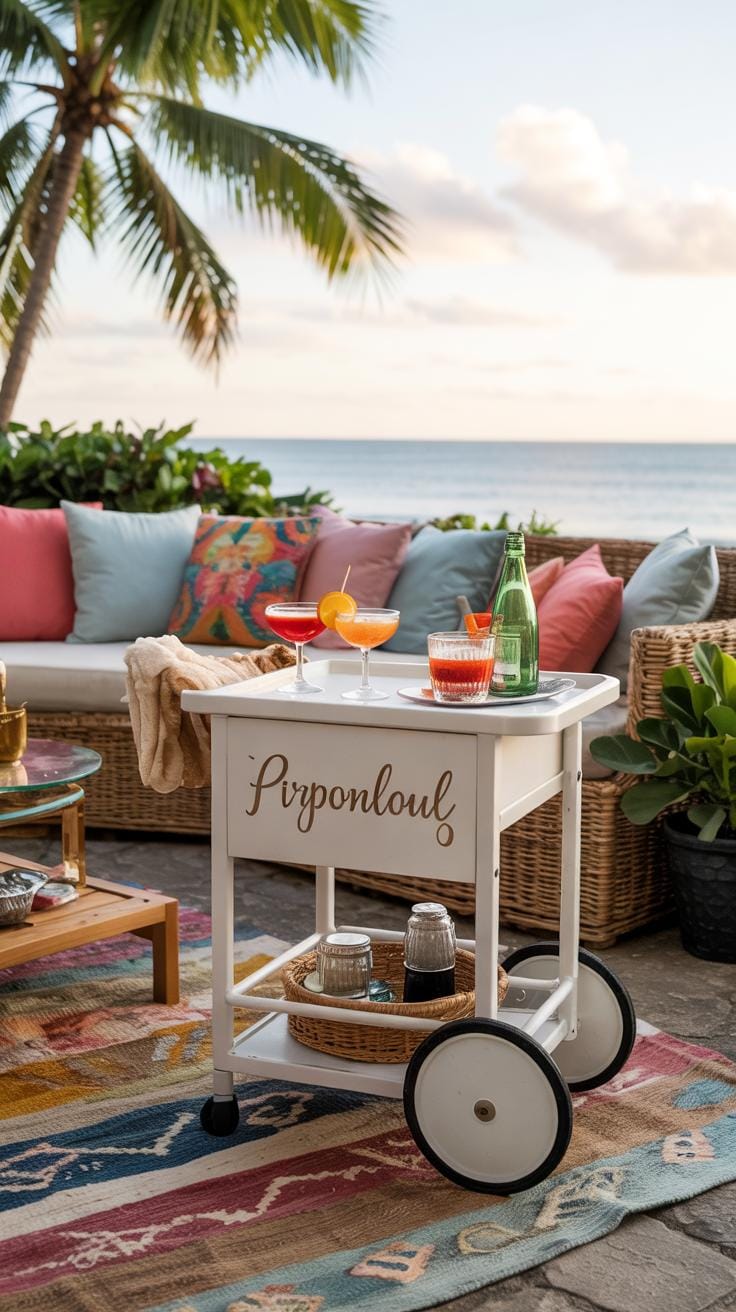Introduction
Designing a tropical house exterior goes beyond just aesthetics. It involves creating a seamless blend between indoor and outdoor living spaces that complements the tropical climate. You want your home to reflect its surroundings while offering a comfortable and functional environment. Many homes in tropical regions use distinctive design elements that encourage natural ventilation, sunlight, and outdoor connectivity. This creates an inviting atmosphere right outside your door.
Outdoor living trends also play a key role in enhancing the tropical home experience. These trends focus on how you can maximize your outdoor space for relaxation, entertaining, and day-to-day living. By following current trends, you ensure your outdoor areas stay modern, practical, and appealing. The key is incorporating design features and materials that hold up well under tropical weather conditions while making your home a natural extension of the environment around it.
Design Fundamentals for Tropical House Exteriors
Designing a tropical house exterior means responding carefully to your climate. High humidity, heavy rainfall, and strong sun shape every decision you make. Creating natural ventilation is key. Large windows and open layouts promote air flow, helping to cool your home without relying on air conditioning.
Shading plays a vital role too. Roofs with wide eaves block direct sunlight and keep rain off your walls. This lowers indoor temperatures and prevents moisture damage. Using materials that resist mold and decay improves durability in the wet climate.
Architectural features like raised floors and covered patios create smooth transitions between indoors and outdoors. These elements reduce heat gain and connect you to your natural surroundings. How can your exterior design bring you closer to the environment while standing up to tropical weather? Focusing on these fundamentals creates a home that feels both comfortable and connected.
Climate Responsive Design Features
Wide eaves and large overhangs protect your tropical house from strong sun and heavy rain. They shade windows and walls, cutting down heat gain inside. Overhangs also shield outdoor living areas, creating comfortable spaces even during intense weather.
Louvers offer adjustable ventilation. Placing them on windows or walls controls airflow without opening the whole window. You can block rain while letting in a cool breeze. This improves comfort and reduces the need for mechanical cooling.
These design elements also extend the lifespan of your home’s exterior. By keeping walls dry and shaded, they reduce the risk of damage and lower maintenance. Consider how adding eaves, louvers, or pergolas could improve your home’s comfort and durability.
Material Selection for Longevity and Beauty
Materials for tropical exteriors need to stand up to heat, rain, and insects. Concrete is strong and moisture-resistant. It also provides a cool surface that helps moderate indoor temperatures. Natural stone offers durability and a timeless look that fits tropical settings well.
Stucco protects surfaces from water damage and requires little upkeep when properly applied. Treated wood combines natural beauty with resistance to rot and insects when maintained regularly.
Choosing materials that suit your climate adds both beauty and function to your home. How can these materials help you create an exterior that stays strong and attractive year after year? Simple maintenance and smart choices make lasting tropical charm possible.
Integrating Indoor and Outdoor Spaces Seamlessly
Connecting your home’s interior with outdoor areas creates a natural flow that enhances both comfort and lifestyle. Open floor plans allow rooms to feel larger and more inviting by removing barriers between indoor and outdoor environments. Sliding glass doors act as gateways, making transitions simple while bringing in natural light. You can open them fully to blend dining rooms or living areas with terraces or verandas.
Terraces and verandas serve as practical extensions. They capture breezes and shade, improving air flow around your home. When placed thoughtfully, these spaces encourage you to spend more time outside without sacrificing comfort. Have you considered how your daily routines might change with a lounge or dining area just steps from your kitchen? The seamless integration invites fresh air in and brightens your interior spaces naturally.
Maximizing Natural Airflow
Cross ventilation is critical in tropical homes to keep rooms cool without heavy use of air conditioning. Position windows directly across from each other to encourage air to flow through your space. Align vents and door openings to channel breezes strategically. Window placement near leafy areas or water features can amplify cooling effects.
Open layouts promote airflow by limiting walls that block wind. High ceilings paired with operable windows create air pockets that rise and exit, pulling cooler air inside. Does your home’s design allow air to move freely, or are some areas stagnant? Small changes like larger windows and fewer interior partitions can significantly reduce heat and improve comfort.
Creating Functional Outdoor Extensions of Indoor Rooms
Design outdoor living rooms and kitchens as natural continuations of your interior space to make island living easy and enjoyable. Use matching flooring or colors outside and inside to visually link areas. Select furniture designed for outdoor use but similar in style to your indoor pieces.
Outdoor kitchens with grills, sinks, and prep surfaces let you cook without running back and forth. Covered dining spaces protect you from rain and sun while keeping you close to nature. Imagine relaxing just steps away after preparing a meal, or enjoying an evening with friends under the open sky. These areas invite daily use, not just special occasions.
Current Outdoor Living Trends for Tropical Homes
Outdoor living in tropical homes focuses on comfort, durability, and seamless interaction with nature. Outdoor kitchens have become a must-have, offering a way to cook and dine while enjoying warm weather and lush surroundings. These kitchens often use materials like stainless steel, concrete, and natural stone to withstand humidity and rain without losing style.
Fire pits are gaining popularity for creating cozy gathering spots that extend usability into cooler evenings. They add ambiance and warmth without overwhelming the tropical atmosphere. Multi-functional furniture is another trend. Pieces that serve more than one purpose save space and adapt easily to changing needs, such as coffee tables with storage or seating that converts into beds.
How can you make your outdoor space more versatile without clutter? Choosing flexible furnishings allows you to host family dinners, relax with friends, or enjoy quiet mornings in nature. Think about your lifestyle and select features that encourage you to spend more time outside while honoring the tropical environment.
Outdoor Kitchens and Dining Spaces
Outdoor kitchens suit tropical climates because cooking smells and heat stay outside, keeping interiors fresh. Durable materials like granite countertops, sealed hardwood, and powder-coated metals resist moisture and pests. Layouts often include grills, sinks, and refrigerators arranged in a U-shape or linear design to maximize flow and accessibility.
Integrating your kitchen with garden areas invites fresh air and natural light. Consider placing dining tables near flowering plants or under pergolas to create intimate but open spaces. Combining cooking and eating zones without barriers encourages socializing and connects guests directly to the lush surroundings.
What cooking and dining features will make your outdoor kitchen feel inviting all day long? Plan for shade options, easy-clean surfaces, and lighting that extends use into the evening. These details enhance comfort while blending practicality with tropical charm.
Casual Seating and Lounging Areas
Comfort shapes the latest seating trends for tropical outdoor spaces. Modular furniture adjusts to fit groups of various sizes. Weather-resistant fabrics made from solution-dyed acrylic or polyester allow furniture to resist fading and mildew without losing softness or style.
Shaded lounge areas protect you from the tropical sun while encouraging relaxation. Popular choices include canopies, umbrellas, and retractable awnings. Soft cushions and adjustable backrests invite you to unwind for hours, whether reading, napping, or chatting.
How do you want to use your lounging space? Choosing adaptable seating lets you transform it from a quiet retreat to a lively gathering spot. Invest in pieces that are easy to move and maintain, giving you freedom to change the flow of your outdoor living area whenever you please.
Landscaping Ideas to Enhance Tropical Appeal
Choosing the right landscaping helps your tropical home blend with the environment and stand out. Native tropical plants work well since they thrive in humid climates without much fuss. They bring natural color, texture, and shade that cool your outdoor spaces.
Design your garden to offer privacy while keeping an open and inviting atmosphere. Use tall foliage or layered plantings to create natural barriers that shield your patio or pool areas. This creates a private retreat without blocking airflow or sunlight.
Water features bring calm and refresh the air, fitting perfectly with tropical aesthetics. Small ponds, gentle fountains, or trickling streams add soothing sounds and attract local wildlife like birds and butterflies. These elements boost your garden’s charm and encourage you to spend more time outdoors.
How can you balance beauty with function in your tropical landscaping? Think about what suits your lifestyle and environment when planning.
Choosing Tropical Plant Varieties
Pick plants that thrive in the warm, moist conditions of tropical climates. Popular choices include hibiscus for bright blooms, bird of paradise for bold shape and color, and plumeria for sweet fragrance. These plants offer shade, attract pollinators, and create inviting spaces around your home.
Palms, such as the areca and coconut, provide height and cooling shade. Their tall, slender trunks fit well alongside patios or walkways. Heliconias add pops of color with their striking flowers, while ferns and calatheas create lush greenery for shaded spots.
Using native or well-adapted plants reduces maintenance and water needs. Each plant you choose has a role—whether it’s scent, visual appeal, or shade—that enhances outdoor comfort and sets your home apart.
Incorporating Water Features and Garden Structures
Water features like ponds and fountains add a peaceful atmosphere to your tropical garden. The sound of running water softens outdoor noise and cools the air around seating areas. Consider a simple fountain near your patio or a koi pond tucked into a quiet corner.
Structures such as pergolas provide shade and define outdoor rooms. They support climbing vines like bougainvillea or passionflower, which add color and privacy. Pergolas also extend your living space and let you enjoy tropical weather without direct sun exposure.
Choosing materials like wood or stone helps these features blend with your home’s natural style. What distinct elements can you add to make your garden both functional and visually appealing?
Smart Technology for Outdoor Living in the Tropics
Smart technology transforms your tropical outdoor space into a more convenient and enjoyable area. Outdoor lighting, irrigation, and climate controls now work together to make your yard comfortable all day and night.
You can use lighting systems that adjust automatically based on the time of day or movement, which saves energy and boosts security. Weatherproof materials make sure these lights last, even during heavy rains or strong sun.
Automated irrigation systems react to weather changes. They water your garden only when needed, reducing water waste and keeping plants healthy. Climate controls like outdoor fans or misting systems cool your space without raising your electricity bills.
How could technology improve your outdoor experience? Choosing energy-smart, durable options makes your tropical home easier to maintain and more relaxing to enjoy every day.
Energy-Efficient Lighting Solutions
Solar-powered lighting uses the sun’s energy to light your outdoor spaces at night. These lights charge during the day and turn on automatically after sunset. This saves money because you don’t pay for electricity.
LED bulbs are another great choice. They use less power and last longer than traditional bulbs. You can find LED lights in many designs that add style and safety to your walkways, patios, and gardens.
Outdoor lighting that is both solar and LED will survive tropical weather, resisting moisture and heat. This means less maintenance and fewer replacements. What areas around your home need better lighting that won’t raise your utility bills?
Smart Irrigation and Climate Controls
Smart irrigation systems check soil moisture and rain forecasts to decide the best time to water. This prevents overwatering, saving water and keeping plants thriving in a tropical climate.
Outdoor fans and misting systems create cool air where you gather. You can program them to turn on during the hottest hours or control them remotely using apps on your phone.
These systems help your outdoor spaces stay comfortable and usable even on the hottest days. Think about how much more you could enjoy your porch or deck if cool breezes and mist kept the heat down without extra work from you.
Sustainable Practices for Tropical Exterior Design
Implementing sustainable design in tropical homes helps you save resources and protect your environment. Rainwater harvesting systems capture water during heavy tropical rains. You can use this water for garden irrigation or even household needs, reducing your demand on local water sources. These systems often include gutters, storage tanks, and simple filters, making them easy to maintain.
Choosing native plants for landscaping lowers water use because they are adapted to your climate. These plants need less watering and fewer chemicals. They also support local wildlife, improving your outdoor space’s natural appeal. Have you considered how your garden can thrive with less maintenance and still look beautiful?
Using recycled or eco-friendly materials in construction cuts down waste and energy use. Materials like reclaimed wood, recycled metal, or bamboo can be both strong and sustainable. Local sourcing reduces transportation emissions. These thoughtful choices help your tropical home age well without harming the earth. Could your exterior design reflect your commitment to sustainability?
Water Conservation Techniques
Collecting and reusing rainwater is a powerful way to conserve water in tropical climates. Set up rain barrels connected to your roof gutters to capture rainfall. This stored water works well for watering plants, cleaning outdoor areas, or even washing cars. Using this natural resource helps reduce your water bill and lightens the load on public water systems.
You can also design your landscaping with permeable surfaces that let rainwater soak into the ground. This reduces runoff and replenishes underground water. Combining rainwater collection with smart irrigation systems ensures your plants get what they need without waste. How might you redesign your home’s water use to be more sustainable?
Using Eco-Friendly and Recycled Materials
Selecting eco-friendly materials makes your home easier to maintain and better for the planet. Locally sourced stone or sustainably harvested bamboo add natural beauty without a big carbon footprint. Materials like recycled concrete or repurposed wood reduce construction waste. They also age well in humid, tropical conditions.
Renewable materials often come with lower energy costs during production. They offer natural resistance to pests and decay, which suits tropical climates. Using these products promotes a circular economy and supports local businesses. What materials are available near you that can make a real difference in your tropical project?
Maintenance Tips for Tropical House Exteriors and Outdoor Living Areas
Routine Exterior Maintenance
Schedule regular inspections of your tropical home’s exterior at least twice a year. Look for peeling paint or signs of wood decay caused by humidity and sun exposure. Clean surfaces with mild soap and water to remove dirt and mildew before repainting. Use paint designed for tropical climates to resist moisture and fading. Check structural supports and roofing for cracks or rust caused by tropical storms. Tighten loose screws and replace damaged caulking to prevent water intrusion. Keeping gutters clear of leaves and debris helps avoid water damage and mold buildup. What simple task could you add this week to protect your home from tropical wear?
Preserving Outdoor Furniture and Fixtures
Choose outdoor furniture made from materials like teak, aluminum, or resin wicker for durability. Clean fabric cushions monthly using water and gentle soap to prevent mold and fading. Store cushions indoors or in waterproof containers during heavy rain. Apply protective covers to wood and metal furniture when not in use to reduce sun and moisture damage. Treat wooden pieces with sealants or oils yearly to maintain their strength and color. For metal, look for rust spots and sand them down before repainting with rust-resistant paint. How often do you check your outdoor furniture for signs of weather damage?
Customizing Your Tropical Outdoor Living Experience
Think about how you use your outdoor space. Do you want a peaceful retreat or a lively area for friends and family? Designing your tropical outdoor living area around your daily habits makes it more enjoyable.
To add privacy without closing off your space, consider natural screens. Bamboo fences block views while keeping a light, tropical feel. Tall plants like palms or banana trees form green walls that soften boundaries. Retractable shades let you control sunlight and privacy as needed, adjusting easily throughout the day.
Lighting also shapes your outdoor mood. String lights create a warm, inviting atmosphere for evening gatherings. Solar-powered lanterns offer eco-friendly illumination, perfect for quiet corners. Adjustable spotlights highlight plants or pathways, blending function with style.
Divide your space into zones based on how you want to use it. A cozy nook with lounge chairs suits quiet reading or relaxing. A dining table under a pergola invites family meals. For parties, arrange seating around a fire pit or bar area to encourage conversation.
What activities matter most when you step outside? Tailoring your outdoor setup to your lifestyle can make your tropical home a place where every moment feels right.
Creating Privacy in Open Outdoor Spaces
Open outdoor spaces often need privacy without blocking fresh air or natural light. Bamboo fences offer a good balance by creating a screen that lets breeze pass through. Their natural color blends well with tropical surroundings.
Tall plants and hedges create living barriers. Consider fast-growing palms or dense shrubs that sharpen your outdoor boundaries while adding greenery. These plants can reduce noise and create a calm atmosphere.
Retractable shades provide flexibility. You can pull them down when you want privacy or raise them to open the space up again. This makes your outdoor area feel less permanent and more adaptable to weather or company size.
Which option fits your lifestyle and home layout? Choosing the right type of privacy can keep your tropical outdoor living space comfortable and personal.
Designing for Different Activities and Social Needs
Outdoor areas work best when divided into clear zones for various uses. A quiet corner with a hammock or cushioned chair offers a spot to read or meditate. Soft outdoor rugs help define this space visually and add comfort.
For dining, position a table close to the house or under a shade structure. This placement keeps food preparation convenient and protects guests from sun or rain. Simple accessories like an outdoor rug or lanterns make dining areas feel homey and welcoming.
Entertaining calls for larger, open seating arrangements. Group chairs and sofas around a central point like a fire pit or table. This encourages conversation and makes guests feel included. Consider including a small outdoor bar or buffet station to keep refreshments handy.
How can your outdoor space reflect how you live? Creating these distinct zones helps you enjoy each activity without clutter or confusion.
Conclusions
Successful tropical house exteriors rely on thoughtful design choices that address climate, aesthetics, and lifestyle needs. Choosing materials that withstand tropical elements and designing spaces that connect indoor and outdoor areas set the foundation for a lasting appeal. By embracing current outdoor living trends, you enrich your daily experience and increase your home’s value. These trends also encourage spending more time outdoors, which aligns perfectly with a tropical lifestyle.
Planning your tropical home exterior and outdoor living spaces requires attention to detail and awareness of environmental factors. Integrating plants, outdoor furniture, and covered areas invites comfort and style. Each element you select should contribute to creating a harmonious, enjoyable home environment. Your tropical home will thrive when its exterior and outdoor living zones function together seamlessly, promoting a healthy, vibrant lifestyle.

